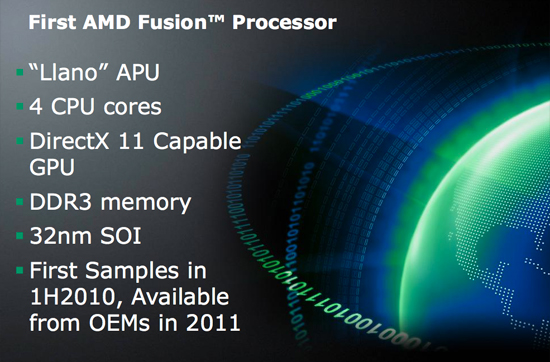What's New: AMD's Catalyst 10.2 & 10.3 Drivers
by Ryan Smith on February 16, 2010 12:00 AM EST- Posted in
- GPUs
10.2: Crossfire Profiles, DisplayPort Audio, & Crossfire Rearchitecture
The last big feature coming with the 10.2 drivers is a change to how AMD profiles games for Crossfire support. Currently the profiles are integrated in to AMD’s drivers, meaning AMD has to produce a complete hotfix driver whenever they need to publish what’s otherwise a minor profile update to enable Crossfire support for a game. This is clumsy for the user (it’s 110MB+), a source of extra work for AMD, and a nuisance for all parties since it means it can take quite some time before Crossfire support gets enabled on a game.
For 10.2, AMD is finally stepping up to the plate and separating the Crossfire profiles from the drivers. The profiles are now stored in a separate encrypted file (atiapfxx.blb) that can easily be updated whenever AMD needs to publish a new set of profiles. AMD will now be able to offer a small executable download that will install the latest profile set, and can update that out-of-band without interfering with driver releases and development.
For NVIDIA users, this is nothing new. NVIDIA has offered the same feature for quite some time, so this brings AMD up to parity with NVIDIA on the matter. The recently released Mass Effect 2 is a great example of this: NVIDIA was able to publish a half-megabyte profile update, while AMD had to publish a 112MB Catalyst hotfix. With profile support, AMD will now be able to publish small (and potentially frequent) profile updates just like NVIDIA has been doing.

The files in a Catalyst profile update
There is still going to be one difference between the two companies however, and that’s letting end-users meddle with profiles. NVIDIA has allowed end-users to write and edit profiles for games (including through the use of tools like nHancer) while AMD has not. This will not be changing – AMD users will still not be able to write their own profiles.
When we asked Terry about this at CES, he said that AMD’s position is that they believe users are better off with professionally created and validated profiles, rather than enthusiast created profiles that may end up having problems. We don’t disagree with the logic of this statement, but as enthusiasts we have never been above getting our hands dirty and/or creating problems in the process of solving them (it’s half the fun!). AMD absolutely needs to publish profiles for games, but we still want to see AMD relinquish some of their control of game profiles so that enthusiasts have the ability to play with them if they desire.
To that end, we did some digging and at least in the 10.3 driver set being sampled to us, AMD includes a utility called atiapfxx that can read and write the encrypted files that store profiles. However in spite of its proclaimed ability to decrypt AMD’s profiles, we have been unable to successfully do so as the tool keeps crashing. Furthermore AMD declined to provide us with any kind of sample of what an unencrypted profile (which would be in XML form) would look like, so we don’t even know quite what’s in a profile. Finally, it looks like AMD is signing the profiles with a key (not included) judging from the command-line options in the utility. So in spite of having moved profiles out of the drivers, it doesn’t look like enthusiasts are any closer to getting to write profiles for AMD’s drivers.
Moving on, we have the addition of DisplayPort Audio to AMD’s drivers. This is another 10.2 feature that originally showed up in the 9.12 hotfix drivers, so its inclusion here should come as no surprise. The DisplayPort standard allows for audio to be transmitted along-side the video stream, and while AMD’s hardware has supported it, it’s only finally being enabled in the drivers. Right now it’s a forward-looking feature – since DisplayPort isn’t meant to replace HDMI for TV connections, it’s only used by a few monitors that have some kind of integrated audio capabilities such as built-in speakers or a built-in headphone jack, such as Dell’s U2410.
Finally, AMD has been doing some work to rearchitect how Crossfire works at the driver level, and those changes are in the 10.2 drivers. AMD has moved some Crossfire code from the 3D driver to a separate driver component as a forward-looking gesture. By doing this, AMD is getting the Catalyst drivers ready for future products such as Llano, AMD’s first CPU/GPU Fuzion product. The ultimate purpose is going to be to allow them to better combine IGP and discrete GPUs, much like Hybrid Crossfire did on AMD’s earlier products but with a greater tolerance for feature differences. Bear in particular mind that AMD’s next IGP (before Fuzion) will be DX10.1 based, while AMD’s current GPUs are DX11 based.

Llano: The reason for the Crossfire rearchitecture










75 Comments
View All Comments
Iketh - Wednesday, February 17, 2010 - link
the big cursor and crashing during full screen video playback were my show stoppersIketh - Thursday, February 18, 2010 - link
nevermind the big cursor bug still exists and I'm still locking up playing video captured with frapscapalio - Thursday, September 8, 2011 - link
Hi Bhaberlei download the software its really help full Thanks for sharing ..http://www.replicationcentre.co.uk
stanislav_kosev - Thursday, September 20, 2012 - link
Well done i have placed my order for it. Hope that it 'll be a very nice product. Thanks for sharing. http://www.insightvision.bizstanislav_kosev - Thursday, September 20, 2012 - link
It looks like ATI Catalyst 10.3 Beta leaked out. I am pretty happy with it. http://www.insightvision.biz/cd-dvd-replicationthanks